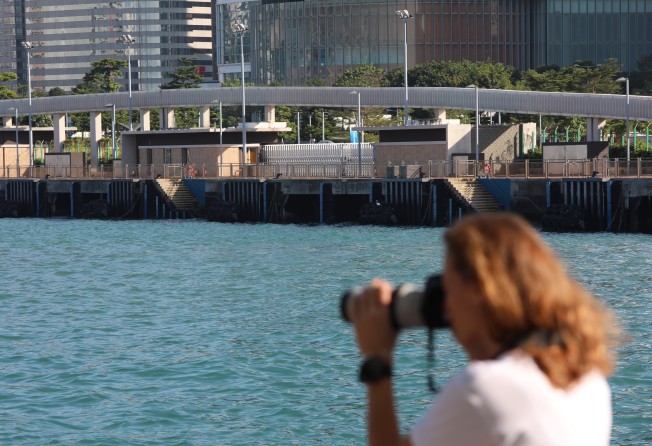
Insufficient site checks lead to hundreds of millions of dollars in extra costs for project to improve Victoria Harbour’s water quality
- The Harbour Area Treatment Scheme, which involves three phases, was launched in 1989
- This marks the second time that the Drainage Services Department has been called out on the same mistake

Hundreds of millions of dollars in extra costs were spent on a major infrastructural project in the city to improve the harbour’s water quality as a result of insufficient site investigations, a report by the Audit Commission has revealed.
The same mistake had been identified by the commission in phase one of the same project, known as the Harbour Area Treatment Scheme, 15 years ago. The Drainage Services Department had been criticised for its inefficient pre-tender soil investigations back then.
“The department should better ascertain the presence of structures in the vicinity of the work sites before inviting tenders,” said the report which was released on Wednesday. “Further enhancement of pre-tender site investigations is needed.”

First launched in 1989, the three-phase treatment scheme was meant to improve the water quality of Victoria Harbour.
The project examined by the Audit Commission this time was Stage 2A, which commenced in 2008 and began operations in 2015 after a year’s delay. The project, with an approved funding of HK$17 billion, involved building a 20.8-km deep sewage tunnel which would treat all sewage from the northern and southwestern parts of Hong Kong Island by transferring the waste to Stonecutters Island for disinfection before discharging it into the harbour again.
According to the audit report, the department failed to identify the presence of government structures and adverse ground conditions before inviting tenders.
The structures referred to a shaft constructed at Aberdeen in 2009, and the Drainage Services Department only discovered that there was an abandoned concrete structure underground – which belong to it – after excavation works started.
The discovery resulted in extra excavation works and a maximum of 411.5 days’ delay on the construction, costing prolongation costs of HK$323.3 million.
The report’s reference to adverse ground conditions referred to the installation of steel casings at Ap Lei Chau sewage tunnels’ entry and exit points, where underground obstructions with large boulders and reinforced concrete slab were found, which meant that the original technique could not be adopted. This led to a delay of 264.5 days and an extra cost of HK$6.3 million.
Other delays in the project included discovery of cavities in rocks and increased hardness of the rocks underground.

The same kind of problems – absence of ground conditions assessment and utilities – arose when the Stonecutters Islands Sewage Treatment plants were being built, causing a few millions dollars in prolongation costs.
“Some of the works contracts under the project involved significant amounts of claims or omitted items, and as of September, while all the works contracts except one had been substantially completed, no post-completion review was conducted,” the report noted, suggesting it was an opportune time to conduct a review now.
The project was still within budget, despite the extra money spent, according to the report.
While some of the failures could be seen as human errors, structural engineer Ngai Hok-yan said some other problems might be hard to prevent.
“For example, the department should have maps that showed the situation of the area, including any government structures underneath, thus this might be their fault for not doing enough preparations,” he said. “Whereas for the adverse ground conditions, as the tunnels have to be built in approximately 40 metres underground, sometimes early pre-tender site investigations could hardly discover the problems either.”
He said, in order to save time, the department might wait until the contractor carried out construction works, in which they would eventually dig into the ground and get to know the situation directly.
The director of drainage services agreed with the audit recommendations.